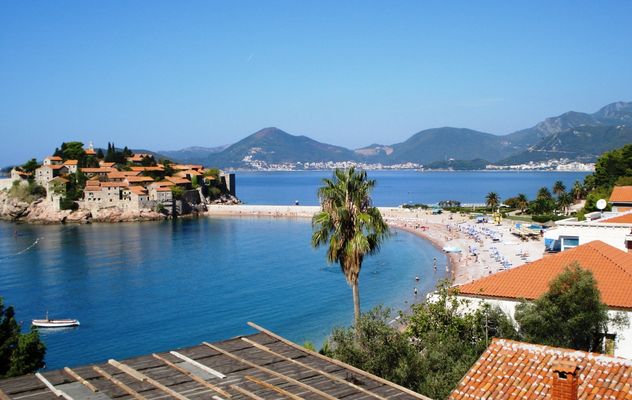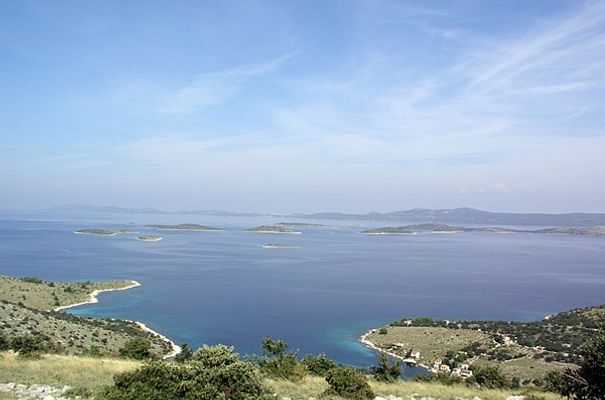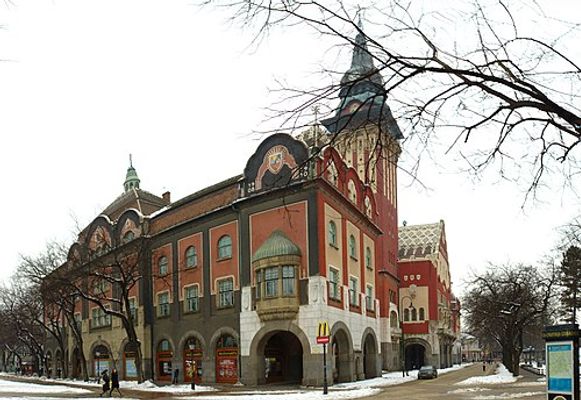
From Wikipedia: Bosnia and Herzegovina (Bosnian: Bosna i Hercegovina, Босна и Херцеговина, usually shortened to BiH) is a European country located on the Balkan Peninsula. It used to be part of Yugoslavia but gained independence in 1992. It borders Croatia to the north, west and southwest, Serbia to the east and Montenegro to the southeast. Mostly mountainous, it has access to a tiny portion of the Adriatic Sea coastline in the south.
find another country
Stari Most

[from en.wikipedia.org]: Stari Most, also known as Mostar Bridge, is a rebuilt 16th-century Ottoman bridge in the city of Mostar in Bosnia and Herzegovina. It crosses the river Neretva and connects the two parts of the city, which is named after the bridge keepers (mostari) who guarded the Stari Most during the Ottoman era. During the Croat–Bosniak War, the Army of the Republic of Bosnia and Herzegovina used the bridge as a military supply line, and the bridge was shelled by the Croatian Defence Council (HVO) and collapsed on 9 November 1993. Subsequently, the bridge was reconstructed, and it re-opened on 23 July 2004. In 2017, the ICTY deemed that the shelling was legal and that the bridge was a legitimate military target.

Sarajevo
Average temperatures
Jan
4°CPrecipitation: 68 mm
Feb
6°CPrecipitation: 64 mm
Mar
11°CPrecipitation: 70 mm
Apr
16°C5Precipitation: 77 mm
May
21°C9Precipitation: 72 mm
Jun
25°C12Precipitation: 90 mm
Jul
27°C14Precipitation: 72 mm
Aug
27°C14Precipitation: 66 mm
Sep
22°C10Precipitation: 91 mm
Oct
17°C6Precipitation: 86 mm
Nov
10°C2Precipitation: 85 mm
Dec
4°CPrecipitation: 86 mm

Banja Luka
Average temperatures
Jan
6.7°C-2.1Precipitation: 71.7 mm
Feb
7.8°C-1.4Precipitation: 67.6 mm
Mar
13.7°C1.8Precipitation: 77.8 mm
Apr
19.3°C6.4Precipitation: 86.5 mm
May
23.2°C10Precipitation: 98.3 mm
Jun
27.3°C14.4Precipitation: 109.2 mm
Jul
29.9°C16Precipitation: 73.9 mm
Aug
30.1°C15.6Precipitation: 74.2 mm
Sep
24.3°C11.4Precipitation: 83.9 mm
Oct
18.5°C7Precipitation: 103.9 mm
Nov
13°C3.2Precipitation: 89.5 mm
Dec
7.2°C-0.7Precipitation: 100.8 mm

Mostar
Average temperatures
Jan
8.3°C1.9Precipitation: 164.7 mm
Feb
10.8°C3.2Precipitation: 153.2 mm
Mar
14.6°C5.4Precipitation: 150 mm
Apr
19°C8.4Precipitation: 127.3 mm
May
24°C12.5Precipitation: 102.1 mm
Jun
27.6°C15.8Precipitation: 77.9 mm
Jul
31.1°C18.6Precipitation: 44.8 mm
Aug
31.2°C18.4Precipitation: 73.7 mm
Sep
26.9°C15.3Precipitation: 96.3 mm
Oct
21°C11.2Precipitation: 153.5 mm
Nov
14.5°C6.7Precipitation: 199.9 mm
Dec
9.7°C3.3Precipitation: 178.9 mm

Neum
Average temperatures
Jan
7°C3Precipitation: 247 mm
Feb
9°C3Precipitation: 319 mm
Mar
11°C4Precipitation: 207 mm
Apr
17°C9Precipitation: 196 mm
May
22°C14Precipitation: 119 mm
Jun
26°C18Precipitation: 81 mm
Jul
33°C23Precipitation: 63 mm
Aug
30°C21Precipitation: 63 mm
Sep
27°C18Precipitation: 196 mm
Oct
17°C11Precipitation: 151 mm
Nov
14°C9Precipitation: 221 mm
Dec
12°C6Precipitation: 209 mm

Tuzla
Average temperatures
Jan
5.6°C-2.7Precipitation: 58 mm
Feb
8°C-2Precipitation: 50 mm
Mar
13°C1.4Precipitation: 57.6 mm
Apr
18.2°C5.4Precipitation: 70 mm
May
22.6°C9.4Precipitation: 97.9 mm
Jun
26°C13Precipitation: 115.6 mm
Jul
28.5°C14.7Precipitation: 92.7 mm
Aug
28.8°C14.5Precipitation: 67.8 mm
Sep
23.2°C10.5Precipitation: 82.3 mm
Oct
18.4°C6.3Precipitation: 81.6 mm
Nov
12.2°C2.2Precipitation: 72.6 mm
Dec
5.7°C-1.8Precipitation: 67.2 mm

Teslic
Average temperatures
Jan
-1°C-5Precipitation: 104 mm
Feb
6°C-2Precipitation: 119 mm
Mar
13°C1Precipitation: 79 mm
Apr
18°C7Precipitation: 147 mm
May
20°C11Precipitation: 206 mm
Jun
25°C16Precipitation: 96 mm
Jul
27°C18Precipitation: 104 mm
Aug
24°C17Precipitation: 101 mm
Sep
19°C12Precipitation: 153 mm
Oct
16°C8Precipitation: 88 mm
Nov
10°C4Precipitation: 96 mm
Dec
-1°C-5Precipitation: 84 mm

Bihać
No climate information available.

Jajce
No climate information available.

Zenica
No climate information available.

Kozara
No climate information available.

Međugorje
No climate information available.









